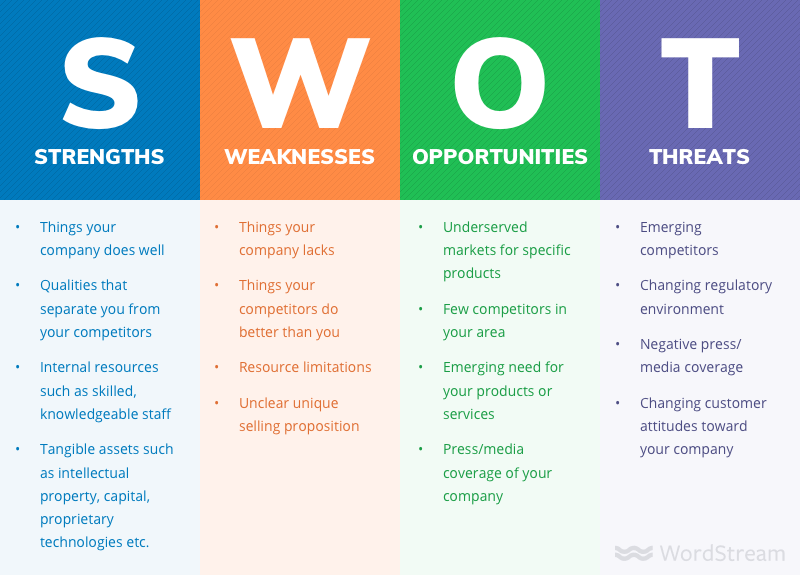The Ultimate Guide to SWOT Analysis for Your Business
SWOT analysis is a strategic planning tool that helps businesses identify their Strengths, Weaknesses, Opportunities, and Threats. By conducting a SWOT analysis, business owners can gain valuable insights into their company’s current position and develop strategies to improve and grow their business. In this comprehensive guide, we will walk you through the process of conducting a SWOT analysis for your business.
What is SWOT Analysis?
SWOT stands for Strengths, Weaknesses, Opportunities, and Threats. Strengths and Weaknesses are internal factors that are within the control of the business, such as its resources, capabilities, and processes. Opportunities and Threats are external factors that are outside the control of the business, such as market trends, competitive pressures, and regulatory changes. SWOT analysis involves identifying these factors and analyzing how they impact the business.
How to Conduct a SWOT Analysis
1. Identify Your Strengths: Start by identifying the internal factors that give your business a competitive advantage. This could include factors such as a strong brand reputation, loyal customer base, innovative products, or talented employees.
2. Identify Your Weaknesses: Next, identify the internal factors that are holding your business back. This could include factors such as outdated technology, limited resources, ineffective marketing strategies, or lack of employee training.
3. Identify Opportunities: Identify the external factors that could help your business grow and prosper. This could include factors such as emerging market trends, partnerships with other businesses, new product opportunities, or changes in consumer behavior.
4. Identify Threats: Finally, identify the external factors that could pose a threat to your business. This could include factors such as increased competition, economic downturns, shifts in industry regulations, or technological advancements that render your products or services obsolete.
Benefits of SWOT Analysis
There are several benefits to conducting a SWOT analysis for your business:
Helps you identify areas for improvement and growth
Provides a clear understanding of your business’s position in the market
Helps you develop strategies to capitalize on opportunities and mitigate threats
Helps you make informed decisions and allocate resources effectively
Conclusion
SWOT analysis is a valuable tool for businesses of all sizes and industries. By conducting a SWOT analysis, you can gain a deeper understanding of your business’s strengths, weaknesses, opportunities, and threats, and develop strategies to improve and grow your business. Follow the steps outlined in this guide to conduct a comprehensive SWOT analysis for your business and take your company to the next level.
Remember, the key to a successful SWOT analysis is to be honest and objective in your assessment of your business’s internal and external factors. By leveraging the insights gained from a SWOT analysis, you can position your business for long-term success and sustainable growth.


